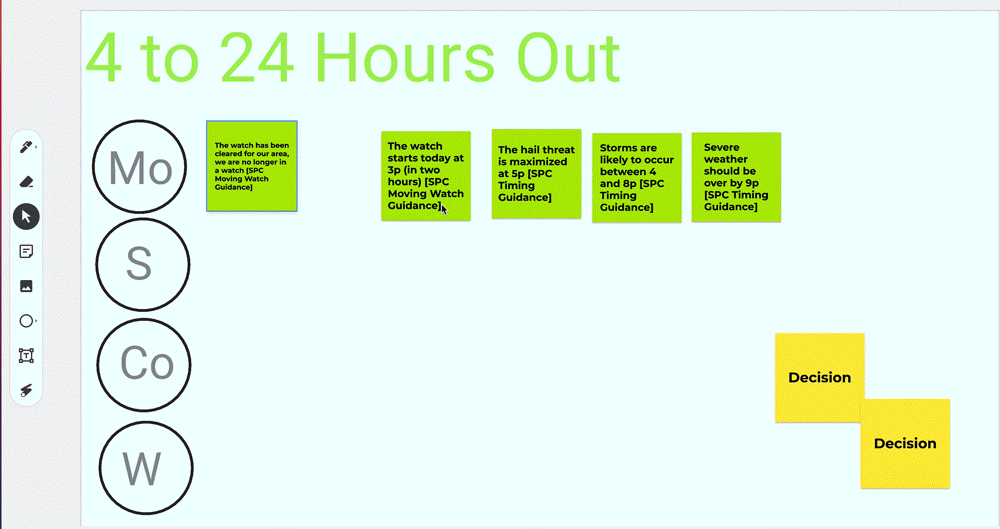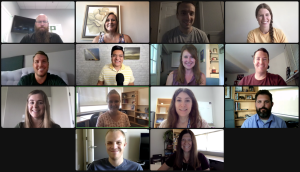 What weather information do broadcast meteorologists seek in the days and hours leading up to a severe weather event? What decisions are being made with this information? Could experimental products help fill any informational gaps in this timeframe?
What weather information do broadcast meteorologists seek in the days and hours leading up to a severe weather event? What decisions are being made with this information? Could experimental products help fill any informational gaps in this timeframe?
These were all questions researchers sought to answer during the Fall 2022 “End User Decisions Over Time” virtual experiment.
Over the course of four 2-day experiments, 10 broadcast meteorologists participated in virtual exercises and discussions with researchers. Participants completed a ranking exercise using Google Jamboards, in which they selected various pieces of weather information listed on cards as “Must Have”, “Could Have”, “Should Have” or “Won’t Have”. Researchers provided example cards for participants, but they also created their own cards.
“Must Haves” in the 4-24 hour and 0-4 hour ranges before severe weather included convection-allowing models (CAMs), SPC Mesoscale Discussions (both for probability of watch and severe weather timing), NWSchat, and severe weather timing information from local National Weather Service offices:
“Things ramp up and the Mesoscale Discussion comes out, watches come out – use the Mesoscale Discussion as a trigger to reissue post on social media and blog, do brief cut ins”
“SPC Mesoscale Discussions drive the ship, as well as watches and local warnings.”
“Mesoscale Discussion prior to watch time, we start to alert folks. This is when things start to get real crazy at the station.”
“Use CAMs to show [viewers] where storms will be, love the HRRR and the ability to forecast storm mode, where storms fire, when they arrive, etc.”
“NWSchat is probably the biggest advancement in warning tech ever besides radar because of exchange of information – saves lives in [large US city] “
After being introduced to experimental products being developed at CIWRO and NSSL, participants were asked to complete the ranking exercise again, this time including the experimental information. “Must Haves” included SPC Moving Watch Guidance, probability of warnings from the Warn on Forecast guidance system, and probability of hazard over the next 60 minutes:
”Giving folks the all clear is critical to maintaining trust and avoiding warning fatigue and to maintain citizen participation in their own safety…when we leave watches up it contributes to fatigue. It also dilutes authority and trust to act when left up too long”
“The more nailed we are with the threat time, the more people will pay attention. I don’t know if I’d share all the timing guidance, but it would help me more.”
“Would not show the likelihood of a tornado warning, I use it internally but no need to send it to the viewer. Not useful for them.”
“This is my favorite of the bunch, I think more forecasts should be probabilistic vs deterministic to avoid being “wrong” when you are barely off.”
More research results from this project will be shared during the presentation “End User Decisions Over Time: Assessing Weather Information Needs and Decision Making for Severe Weather Events with Broadcast Meteorologists” at the 103rd AMS Annual Meeting in Denver, CO on January 9th, 2023.

